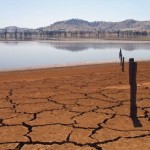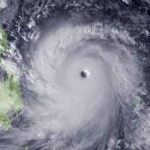U.S. Storms:
- A blizzard that struck South Dakota in October 2013 was unusually strong for early autumn, but not unprecedented in terms of atmospheric pressure. But there is evidence at present to suggest early autumn extreme snowfall events in western South Dakota are less likely to occur as a result of human-caused climate change.
Australian and New Zealand Heatwaves:
- In running multiple global climate models, five independent studies all pointed toward human influence having a substantial increase in the likelihood and severity of the record 2013 temperatures in Australia.
- For New Zealand, model runs show human-caused climate change caused meteorological conditions that were more favourable for drought in 2013.
Asian Heatwaves & Extreme Precipitation:
- Japan, Korea and China all experienced extremely hot summers in 2013. Studies of these events concluded that human-caused climate change made these heatwaves more likely.
- With an early arrival of monsoon-like atmospheric circulation in June, the heavy precipitation that occurred in northern India was a once-in-a-century event; however, analyses of observed and simulated June precipitation provide evidence that human-caused climate change has increased the likelihood of such an event.
European Extreme Events:
- In studying the extreme cold UK spring, for which an extreme, naturally occurring North Atlantic Oscillation was found to have been the major factor, long-term warming due to human-caused climate change has made such a severe cold 30 times less likely.
- Along with natural variability of North Atlantic sea surface temperatures, human-caused climate change played a substantial part in Western Europe’s 2013 hot and dry summer.
- Winter 2013 was southern Europe’s second wettest. Despite this precipitation extreme, no evidence of human-caused climate change could be found through modelling efforts.
- Through model- and observation-based analyses, no evidence was found that human-caused climate change made the heavy precipitation of spring 2013 in the upper Danube and Elbe basins more likely.
- Cyclone Christian, a strong storm in October 2013 over northern Germany and Southern Denmark, was part of the multi-decadal variability that has increased storminess during recent decades.
- Although a rare weather event, an examination of multiple datasets concluded natural climatic variability was found to be a main driver of the Pyrenees Snow Fall in January to June 2013.
The report was edited by Herring, along with Martin P. Hoerling, NOAA’s Earth System Research Laboratory; Thomas Peterson, NOAA’s National Climatic Data Center, and Peter A. Stott, UK Met Office Hadley Centre and written by 92 scientists from 14 countries.
Click here to view the Full Report.
Source: NOAA.















